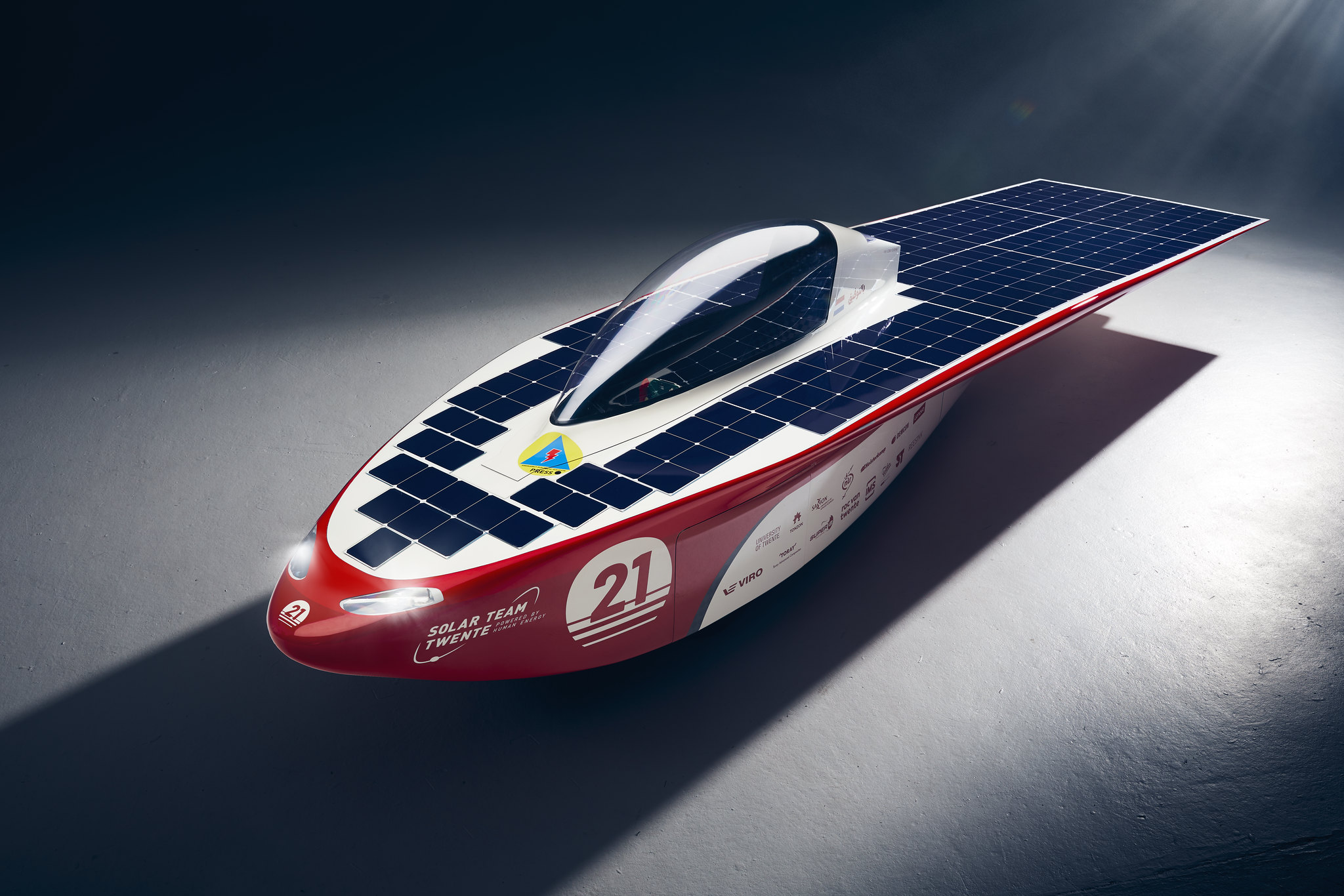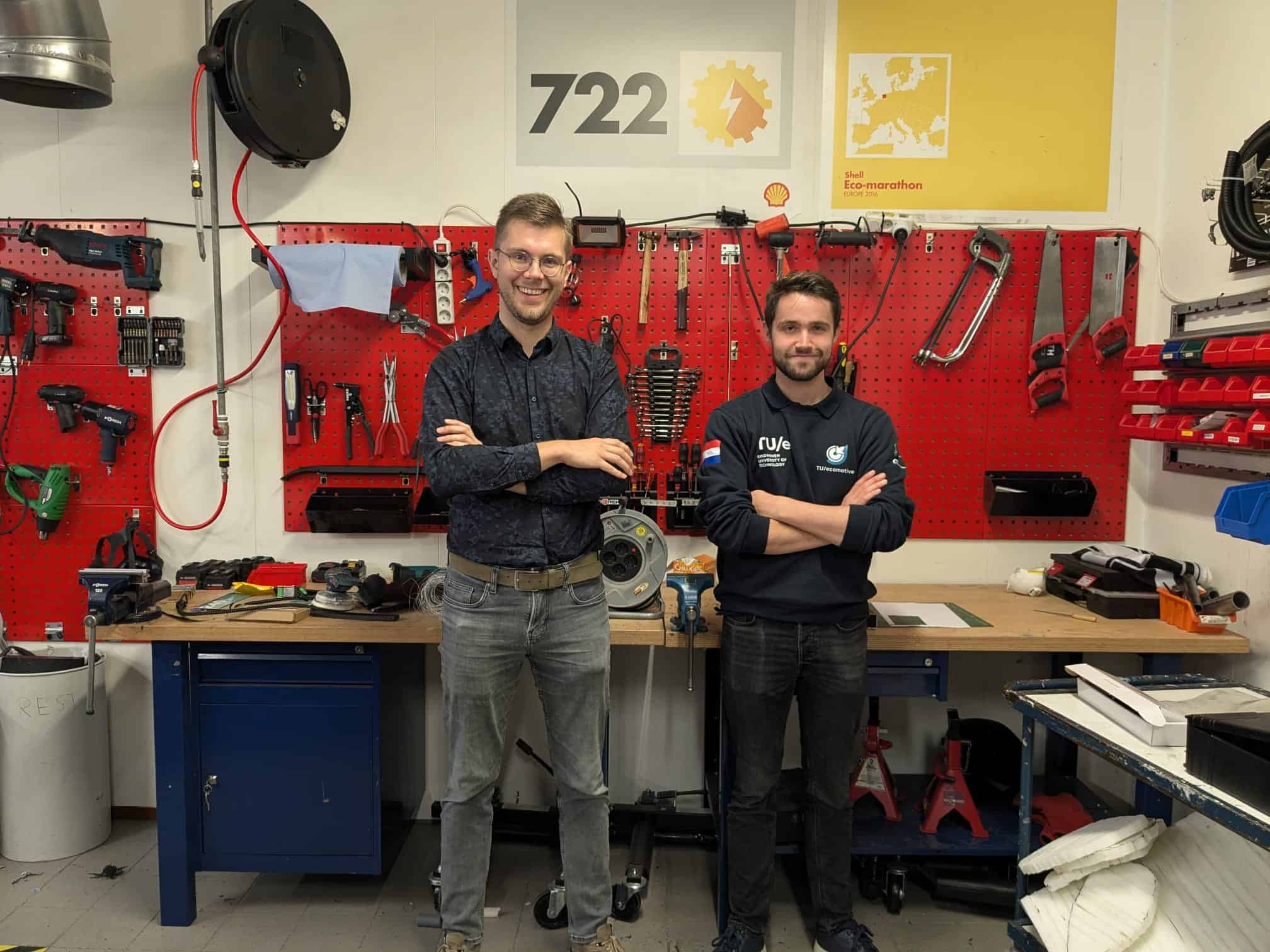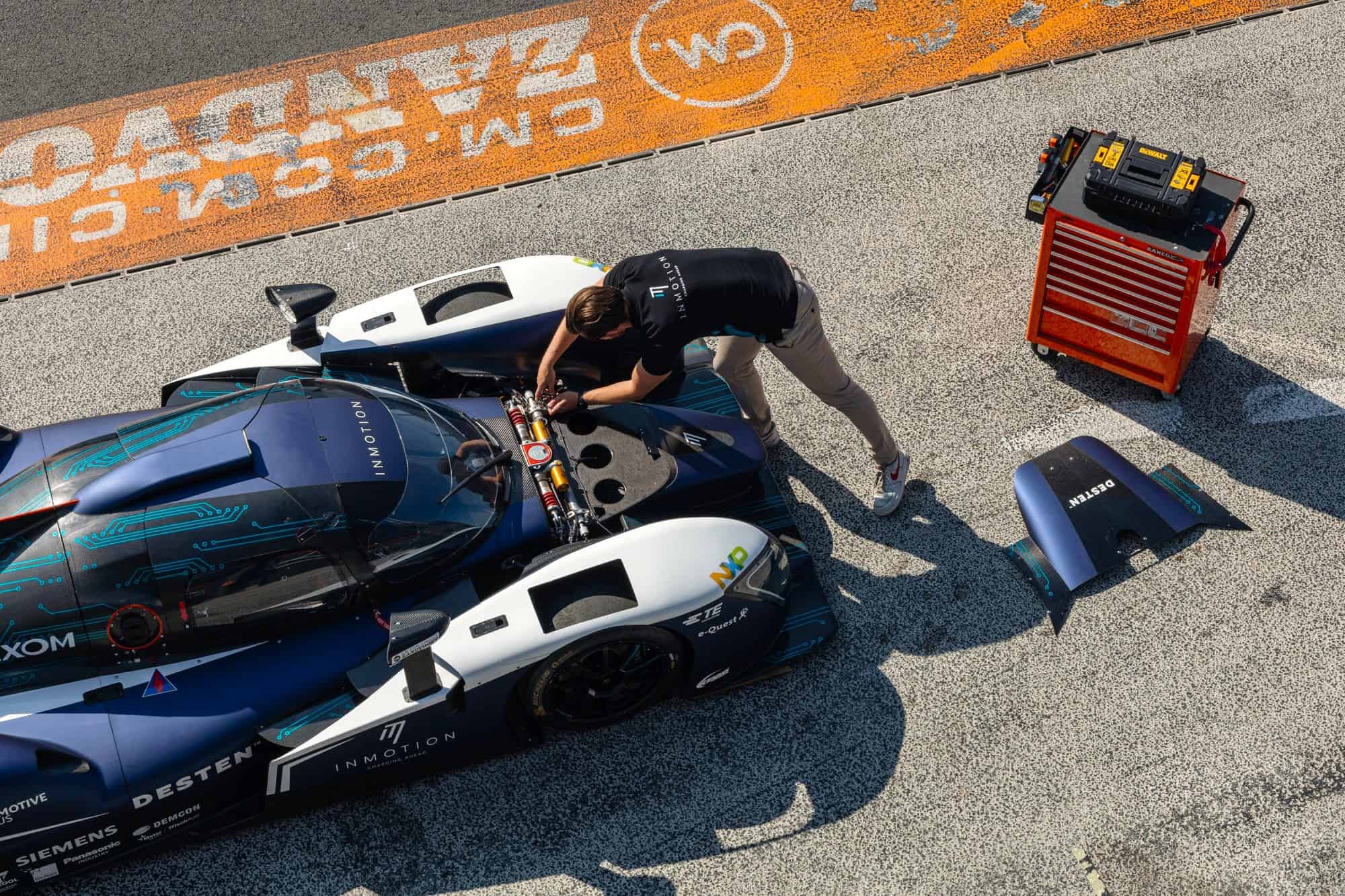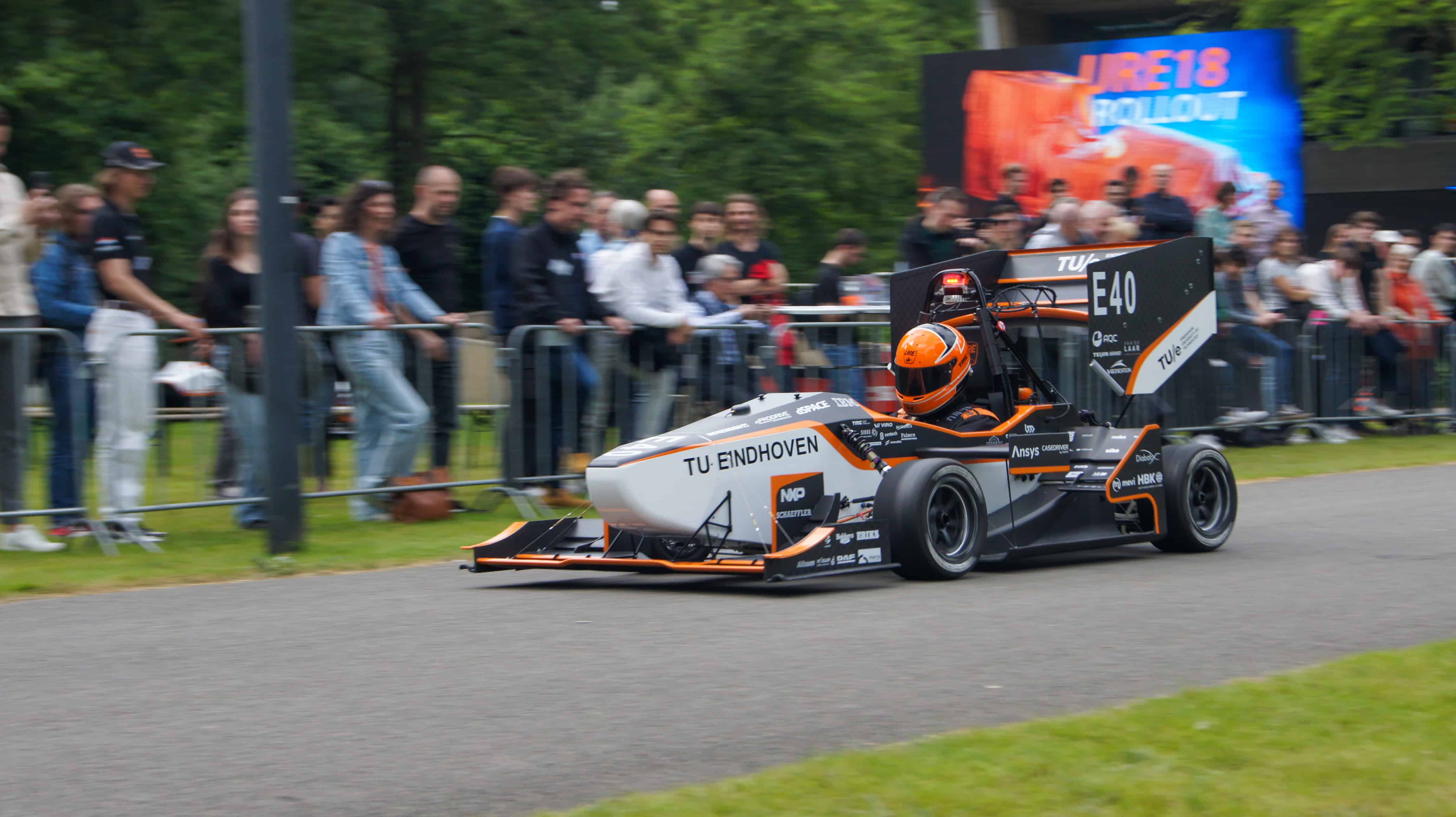
RED Horizon is an extraordinary sight. With three wheels and an aerodynamic design, the cars sports a futuristic look. Normally, the Dutch student team from Twente competes in the Bridgestone World Solar Challenge in Australia against other teams from all around the world. The biennial race was cancelled in 2021 on account of corona measures. That is why the students are now racing a little closer to home – in Morocco. The rules of the race have also changed significantly this year. This led the team to develop a very different car than the previous teams in years past did.
For example, the team changed the shape of their ninth solar car from four to three wheels. In addition, the battery and the battery management system also had to be completely revamped. The team members are proud of the result after a year and a half of intensive work. “It was a special year because of corona,” says Tim Traas, aerodynamics engineer for the Solar Team. “We had less in the way of social commitments, so we could really fully focus on the project.”
The fatest
The Solar Challenge Morocco has three classes, each with strict entry requirements. In the challenger class, it’s about the most efficient car and in the cruiser class, it’s about the most practical car, while in the adventure class is for teams that don’t meet the requirements for the other two classes, but still want to present their vision on solar cars. The Twente team has been participating in the challenger class since 2005. A few times the Twente students were close to victory, but they never took home the first prize. The team was in a good position last year, but then their car was blown off the road.
This is why this year the team is going all out for the win in Morocco. “Our team number has been number 21 from the outset, so we have got to win this year,” he adds with a laugh. “We have a good chance both in terms of technology in the car and in terms of strategy.”
Read more about the Solar Challenge and the other participating Dutch teams here.
A good strategy
“Because we are now driving a different route, we don’t have much use for the strategies of former teams. So we had to come up with something new,” says Mark van Eijk, team leader of Solar Team Twente. In Australia, the teams drive over three thousand kilometers from north to south. Now the teams will drive a 2,500-kilometer loop through Morocco. “In Australia, it’s a straight road through a sandy landscape. But this time we will also be driving through villages and towns and having to deal with a lot of winding roads and differences in altitude,” adds Traas. The team sent ahead two team members to Morocco to explore the route. “The strategy and knowledge about the environment is more important now than ever. On a straight road, it’s mainly about having the fastest car, but now a reliable car and good preparation are arguably just as important.”
Shaking people awake
Besides winning, there is also another important reason for the students to develop a solar car. “With this, we are able to show the industry and society what is possible in the field of solar energy,” says Van Eijk. “It’s difficult to start using the solar cars for the Solar Challenge one-by-one on the road, but it does shake people awake. One of the most common criticisms of electric driving is that it takes a long time to recharge the battery. We are already demonstrating the latest technologies in this area.”
According to the new regulations, the solar cars must carry a license plate and a two-meter-tall doll must be able to fit into the car. Traas: “It seems that by doing this, as if the organization also wants to make the solar cars more suitable as consumer cars.” The aerodynamics engineer thinks that students can do an awful lot. “If companies were to do these kinds of developments, it would take much longer than it would with a student team,” he contends. “We put everything into winning a race and getting the most out of ourselves. This is how we also take the technology one step further.”









